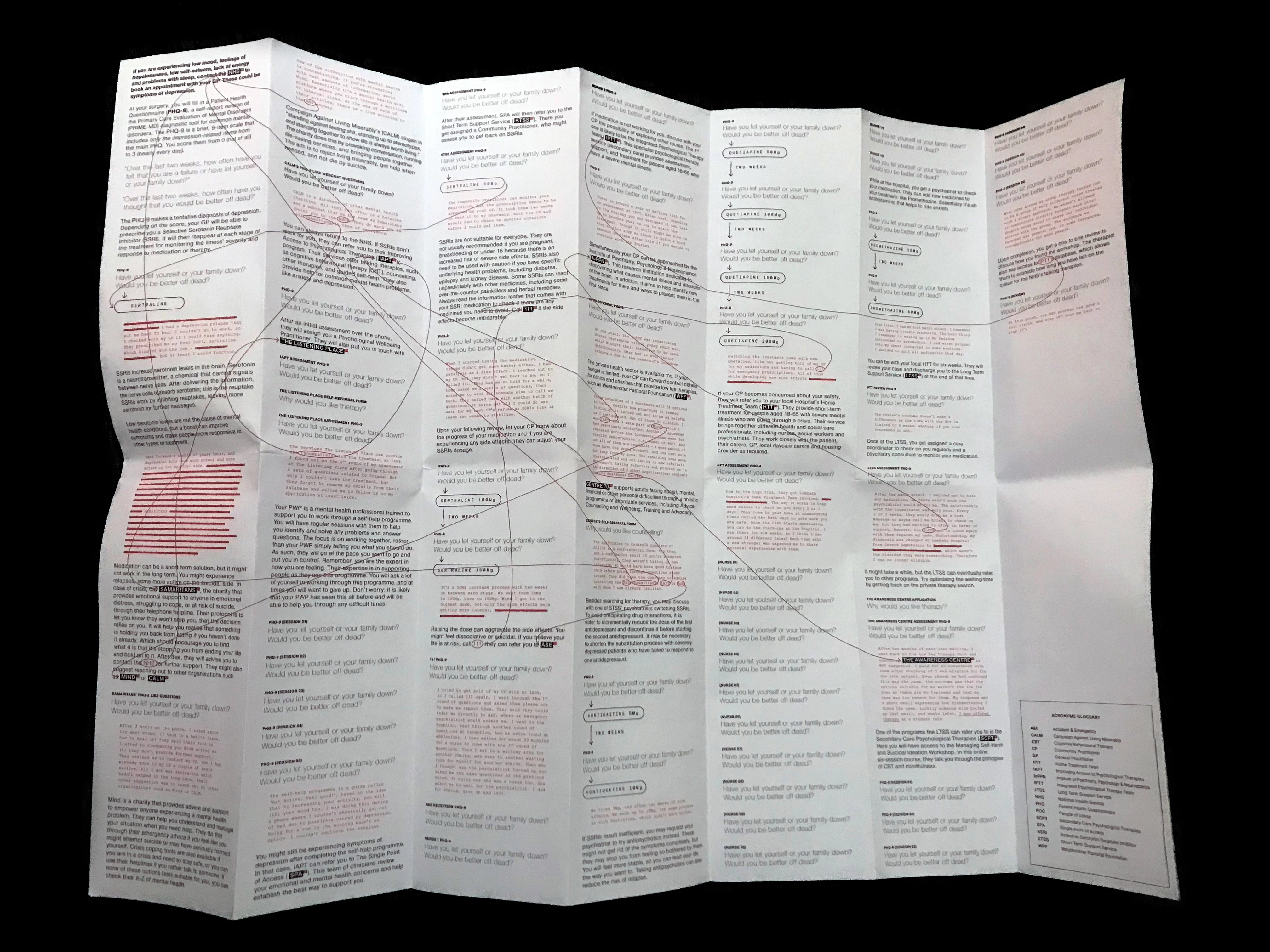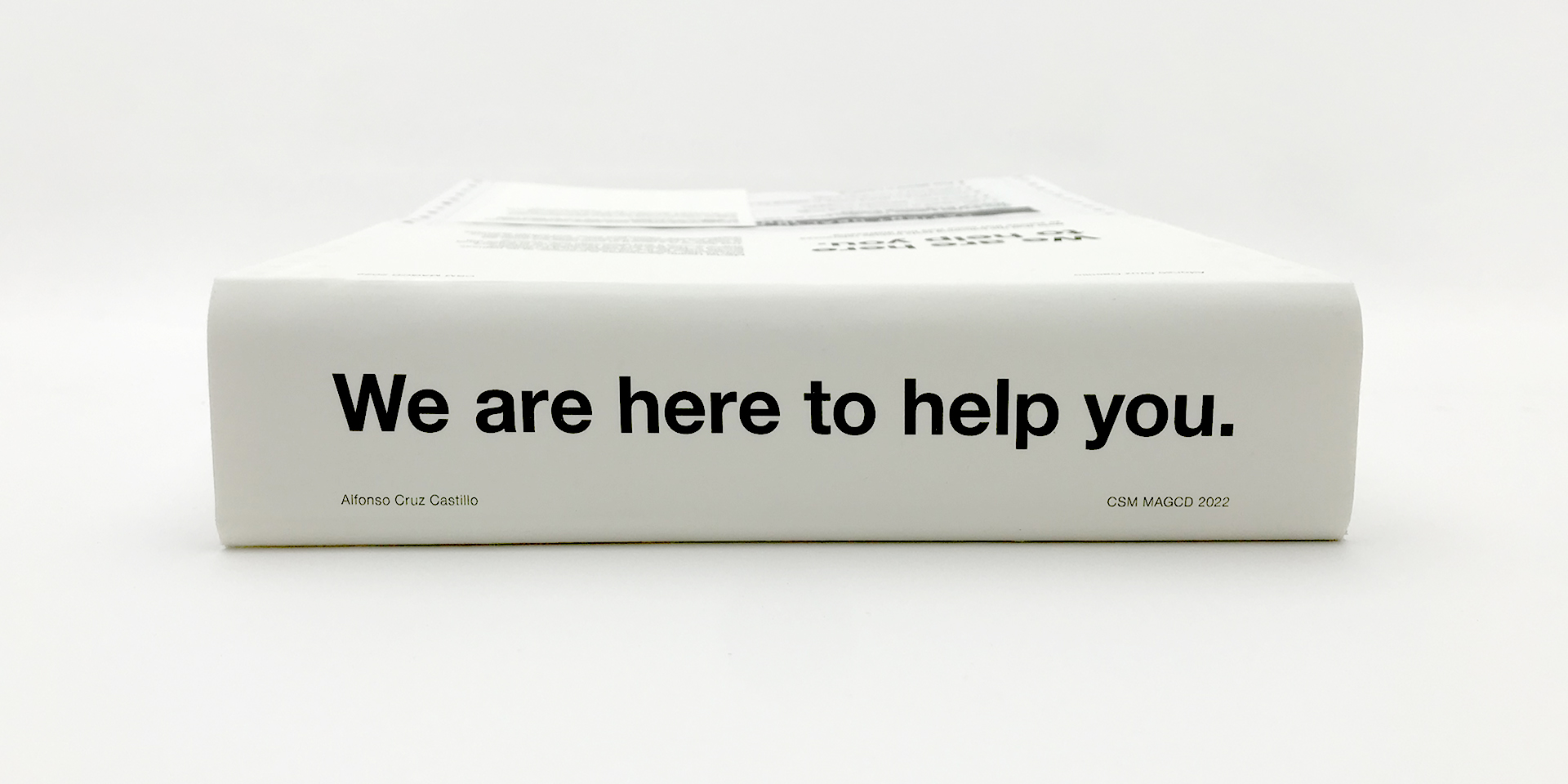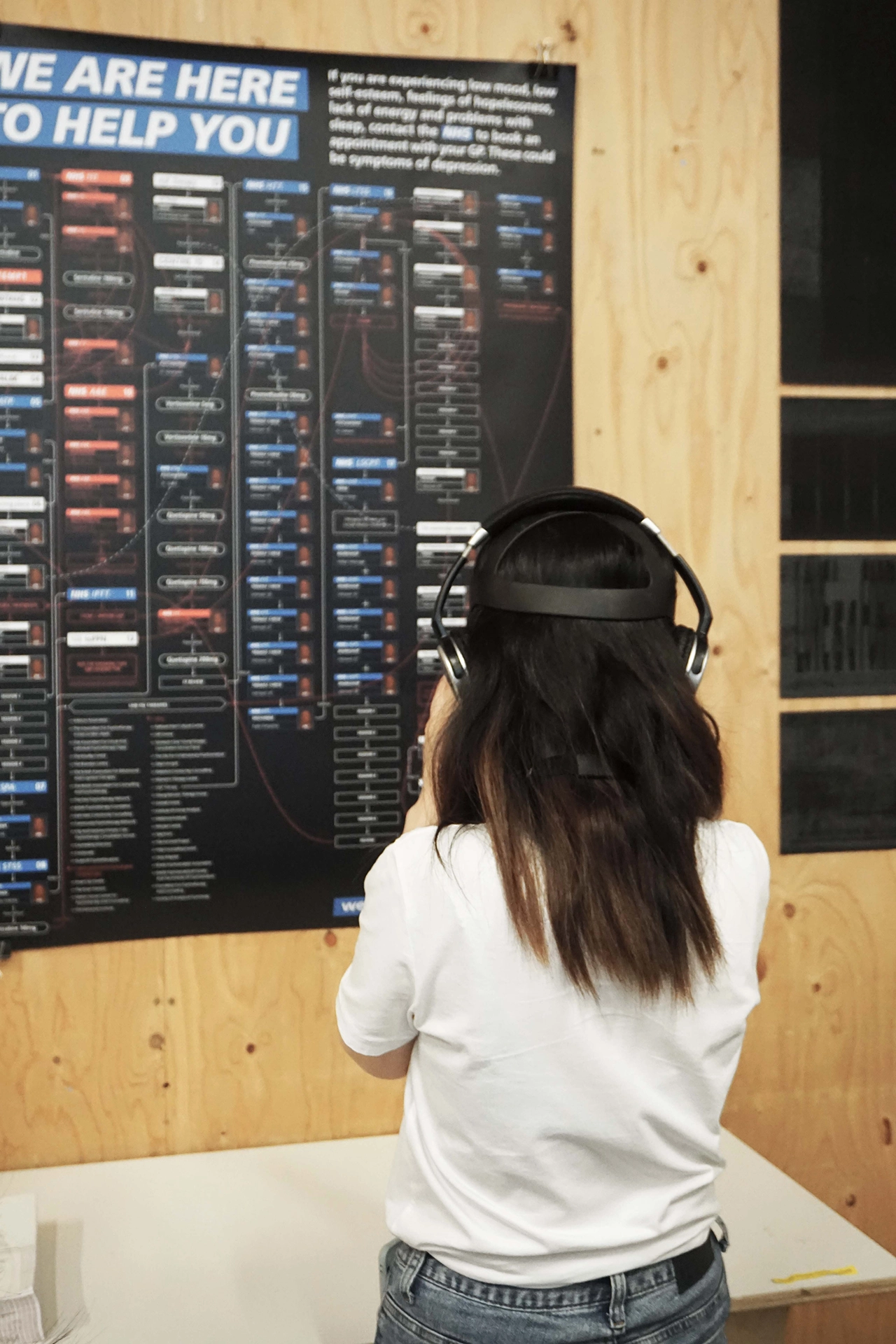A significant part of my practice is dedicated to research and experimentation, using design to explore complex issues and illustrate findings in accessible ways.
In my self-initiated project We Are Here To Help You, I investigated barriers to accessing NHS mental health services, particularly how the current overly-extensive application process can harm patients’ well-being. Through graphic analysis, I identified systemic inefficiencies and translated the findings into relatable visual formats, including a virtual reality experience that recreated personal stories and a publication compiling the paperwork involved demonstrating the scale of bureaucratic obstacles.
The foundation of the research is a flowchart that tracks the route to access treatment. It includes the organisations, people, and procedures encountered across the application process, providing a bird's-eye view of the journey and its ramifications.
The information gathered on how institutions present themselves through marketing materials and how they contrast patients' experiences was plotted into a written map.


Most of the application is made through paperwork. I compiled the documents encountered into a printed archive. It's printed on continuous paper to embody the length of this procedure - 80m in total, taller than a 20-storey building.



Although many support resources were available, the sheer volume of assessments and carer interactions often led to over-communication and saturation. The following experiment simulates the patient experience of receiving information from multiple sources simultaneously.
The project was presented as an interactive installation at Central Saint Martins Shows 2022. Visitors could navigate the flow of accessing treatment and experience the patient perspective, revealing the potential harms of repeated assessments and information overload.


